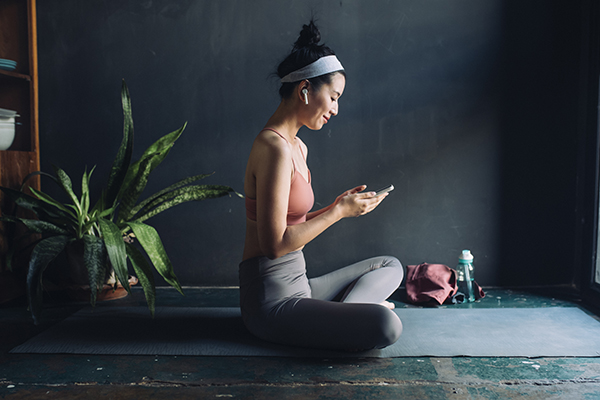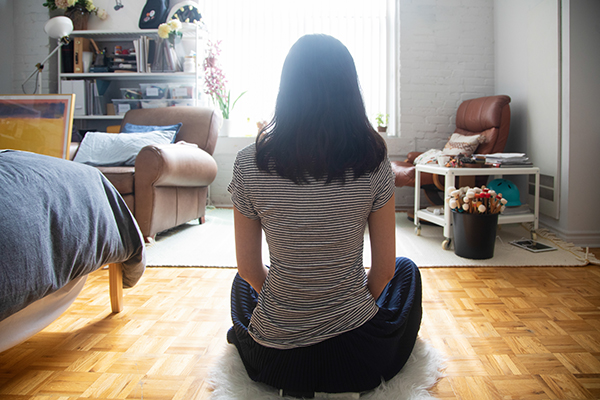How to Meditate

You train other muscles, so why not your mind?
“Your mind is maybe the biggest muscle you have access to that has the biggest impact on how you experience your life and how you navigate your life,” says Megan Monahan, Chopra-certified meditation instructor and author of “Don’t Hate, Meditate!”
Monahan explains that it’s important to have a relationship with that muscle because “there’s literally no part of your life that meditation practice won’t elevate.”
“The thought of meditation might be daunting, but the concept is just about setting aside time directed towards mindful thinking,” explains Cody Braun, CPT, Beachbody’s Assistant Manager of Fitness.
If you’re just starting out, follow this basic guide on how to meditate for beginners:
1. Figure Out Your Why
“Until you can start to see the benefits show up, it’s really important to have that mental connection to how this practice is going to help you in a way you care about,” Monahan says.
She suggests figuring out what you want to improve in your life or what you want to get out of your meditation practice before starting.

2. Find Meditation Resources
Although you can teach yourself how to meditate, you might find it easier with help.
“Not unlike any other physical workout or physical movement practice, it is easier if someone else is showing you the way,” Monahan explains.
That could be a class, video, book, or BODi’s guided meditation program, Unstress: 21 Days of Meditation.
3. Set Aside a Place, But Don’t Get Attached
Monahan says that establishing a special place for your meditation practice can be helpful if you’re drawn to the ritual. Just don’t get too attached to it or the physical items you place there.
“Know that if those things aren’t present, you can still meditate,” she says. “It’s important to have flexibility so that the ritual doesn’t become a hindrance to consistency.”

4. Minimize Distractions
Monahan suggests putting your phone on “Do Not Disturb,” shutting the door and any windows, or just finding the quietest room in your apartment or house.
If your whole family is living, working, and learning at home these days, consider any distractions to be tests for your practice.
Learn to tune them out and keep your focus.
5. Get Rid of Expectations
“It’s not about stopping your mind; that’s impossible,” says Ted McDonald, founder of 5 Point Yoga and Tony Horton’s go-to yogi. “It’s about understanding how you think and using that in a productive, positive fashion.” (We’ll get to what you should think about in a second.)
Some sessions will be relaxing, some will be challenging, but each one plays its part in moving you toward your goals.
“Let go of the idea that it needs to feel like something in order to be a good meditation or to have worked,” Monahan advises, emphasizing that “the only bad meditation is the one you don’t do.”
6. Pick a Session Length and Set a Timer
Monahan suggests sticking with the same amount of time for a week or two until it feels natural before lengthening your session time a little.
But even a couple of minutes is better than none; McDonald even suggests starting with just 60 seconds.
Taking a few minutes out of your day to relax and reflect on your thoughts can do wonders for your mind, body, and stress levels. Meditation has even been shown to help with back pain.
7. Focus Your Attention
Where you place your attention differs between practices, and Monahan says there are many types of meditation.
You can focus on a mantra you’ve selected, your breathing, or sensations in your body.
There’s no right or wrong focus as long as you pick something and gently rest your attention on this anchor.
8. Notice When Your Mind Drifts
If you find yourself becoming distracted, don’t worry.
“You’re going to be distracted,” assures McDonald. “Acknowledge the distraction and then go back to your focal point. It’s a mental exercise; you’re building the muscle of focus.”
Being aware of your thoughts, and when they’ve shifted, is a practice. Monahan emphasizes that this will carry over to your everyday life.
You’ll get better at realizing when you’re not in the present moment, she explains, and get better at bringing your mind “back to a place that is in service of you.”
That’s where the next step comes in.
9. Refocus Your Attention on the Anchor
Monahan says you can think of this as a mental biceps curl.
“The biggest thing you’re doing is getting better at noticing where your mind is and bringing it back to where you want it to be,” she explains. You already picked where you want your mind to be, so simply guide it gently back.
This practice has big benefits outside of meditation time.
“The use of meditation can be beneficial for redirecting your thoughts to more positive and effective thinking patterns,” Braun explains, adding that “having a strong positive mindset is beneficial for pushing through workout plateaus and growing through adversity when it comes to your wellness journey.”
Monahan adds that consistent practice will also help you slow down your reactions.
“Your fuse in your life, the space between the stimulus and your response to it, starts to get longer,” she explains, adding that you’ll be better able to choose your response rather than going with a gut reaction that’s based on emotion. “Your comfort zone gets a lot bigger, and it takes a lot more for that stress response to get activated.”
